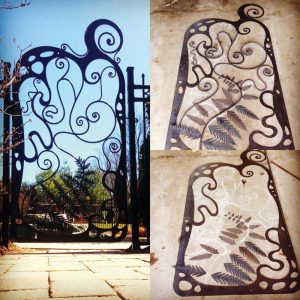
Getting sturdy with wood fences
A classic, go-to option, wood fences are functional and provide durable, long-lasting safety and protection. They can also be esthetically pleasing in design. Current trends include horizontal slats in cedar, composite materials, wood mixture, and even painted wood. Staggered spacing and varying board thickness can add vertical interest to wood fences. Although the “tongue and groove” option creates a solid fence, it can also restrict airflow, which can contribute to an uncomfortably hot backyard in the summer. By incorporating lattice insets or full-lattice panels can help to increase air circulation while also providing additional interest to the fence.
If the homeowner decides they want a fence for privacy, it is important to investigate any potential height restrictions that are mandated in their municipality. Most city bylaws state a fence cannot be higher than 2 m (6.6 ft) and any fence surrounding a pool cannot be climbable by a child or closer than 1.5 m (5 ft) to the water’s edge.
The client’s neighbours are another factor to contend with—especially if they share property lines. Agreeing on the style, colour, and material of a shared fence can be difficult—even contentious—and cause friction between neighbours. If this is a concern, another option is to install a separate, stand-alone privacy screen in lieu of a fence. These installations can usually be built taller than traditional wooden fences and offer more design options and different finishes.

Planting living walls
When it comes to privacy, one cannot find a more natural option than trees and shrubs. That said, there are advantages and disadvantages when using materials provided by Mother Nature.
While trees offer warmth and protection, they do not always produce the effect the homeowner may be looking for with respect to privacy and appearance. For one, these plants take years to mature and are unlikely to provide the homeowner with suitable privacy protection. It is important to also consider the tree’s potential size as it reaches maturity. In the past few decades, nurseries have been modifying large trees, so they grow smaller in landscape designs to prevent them from overwhelming smaller spaces. Narrow-growing maples, oaks, and hornbeams are among the most popular deciduous trees used for the purpose of privacy. For the first 10 years, these trees look great; however, even the narrowest tree can widen to an unexpected size and cause undue problems. These plants can potentially grow to 6 m (20 ft) tall and more than 1.8 m (6 ft) wide. In some cases, the homeowner may find the lateral branches of the tree infringe on their space, if this happens, they should be trimmed from the bottom to help reduce the amount of overhang above their pool or spa.






